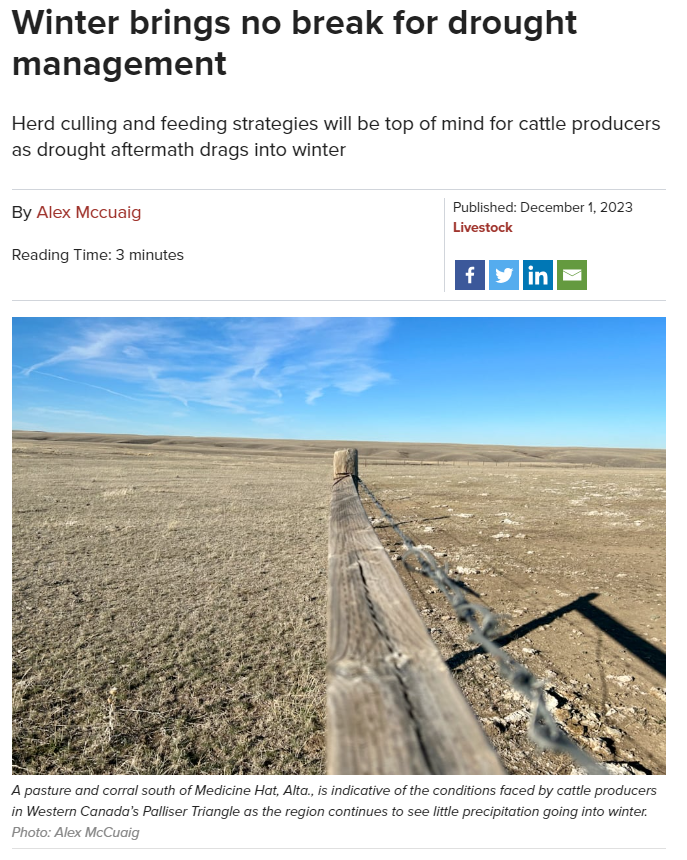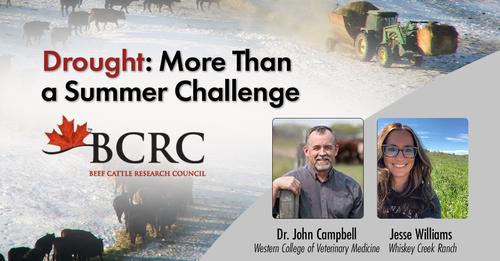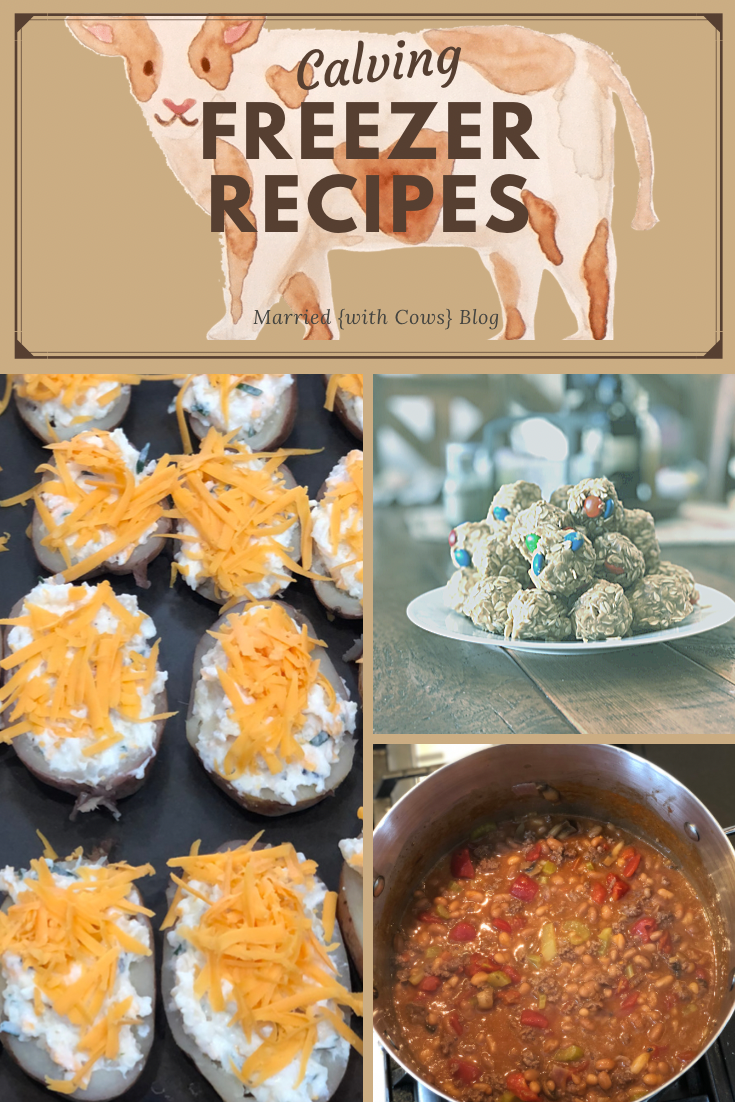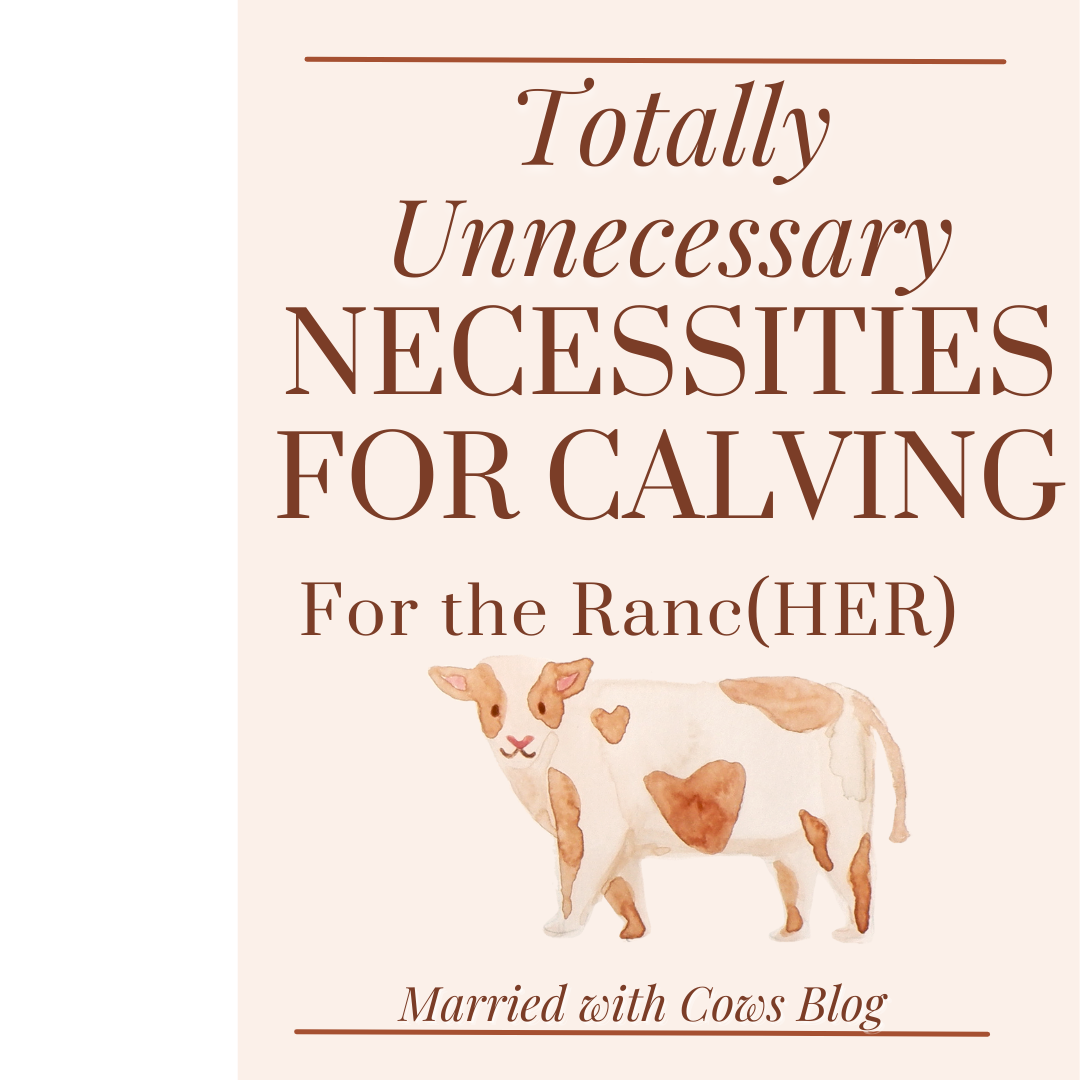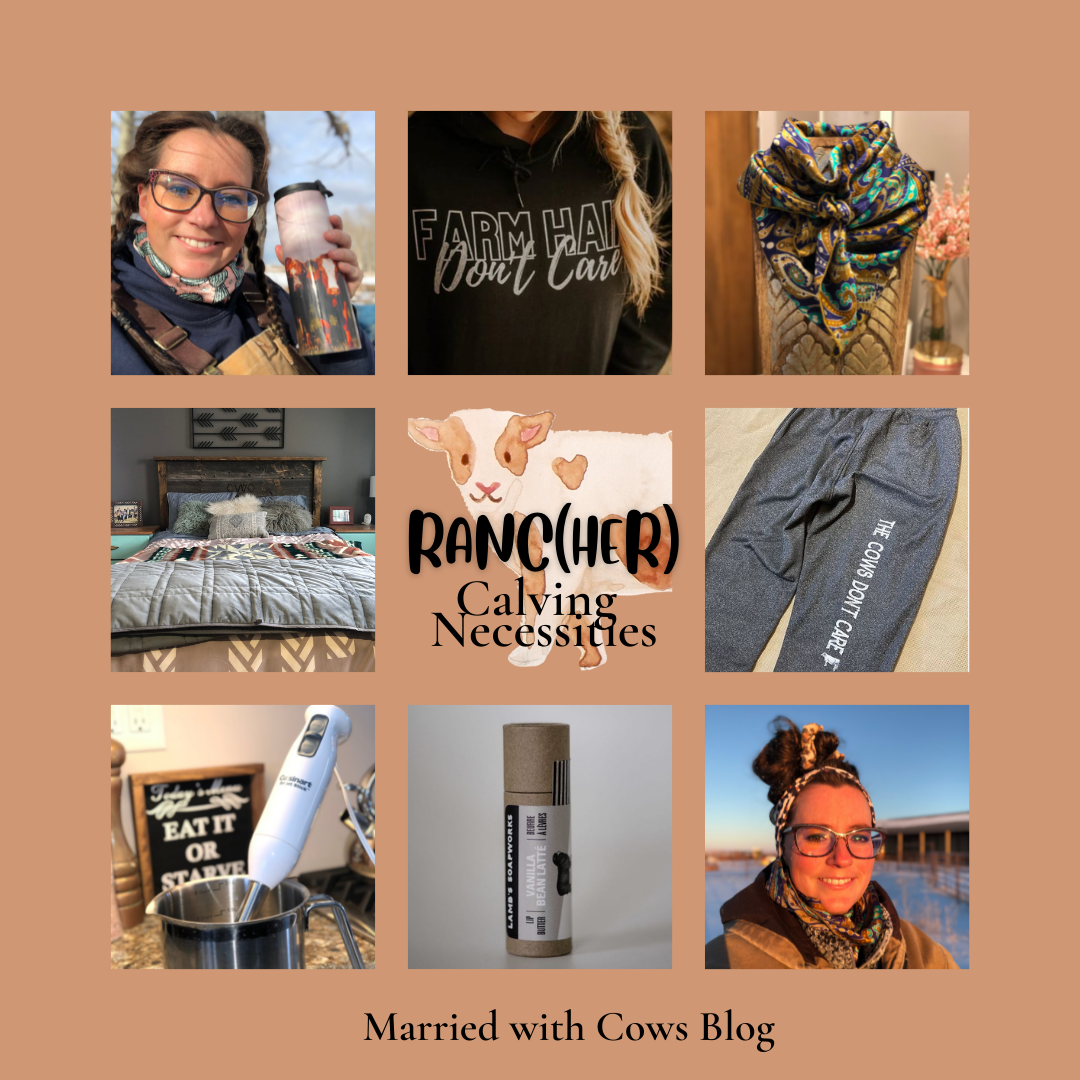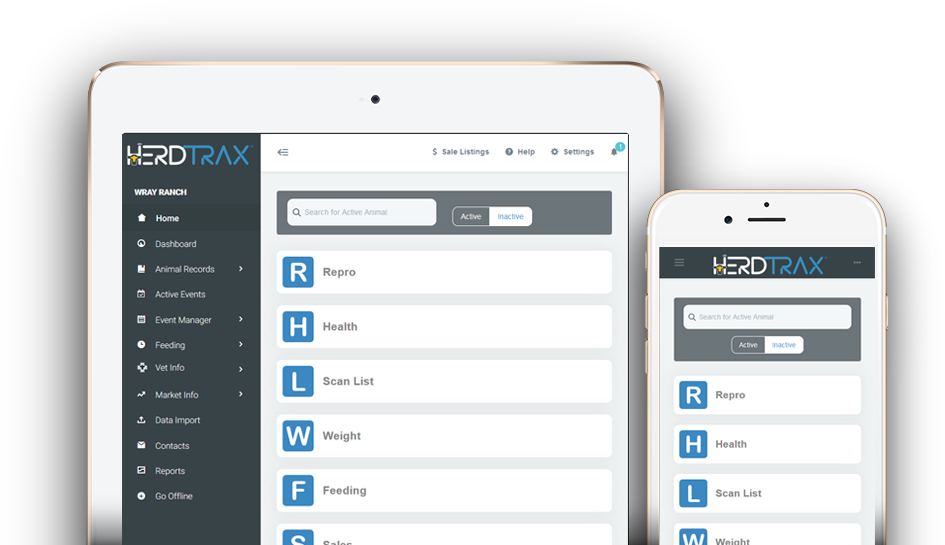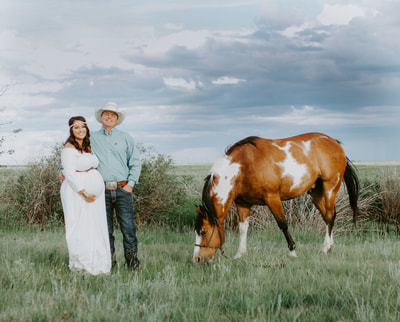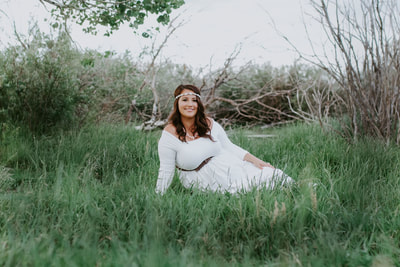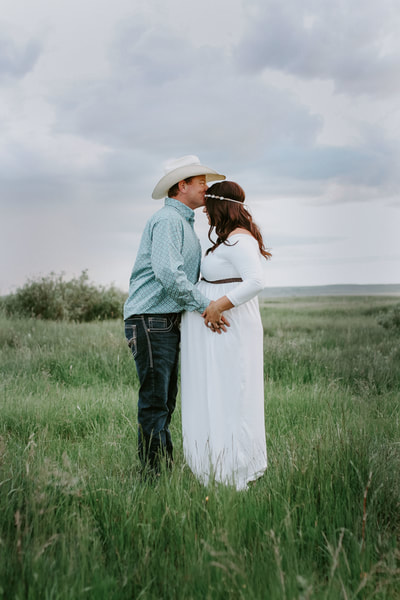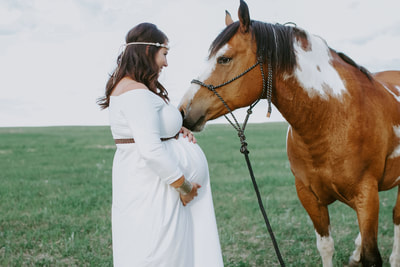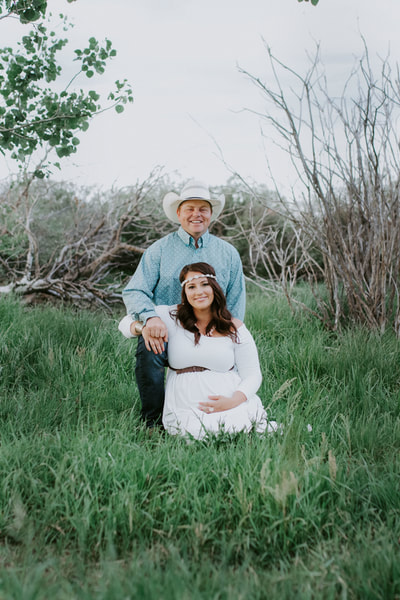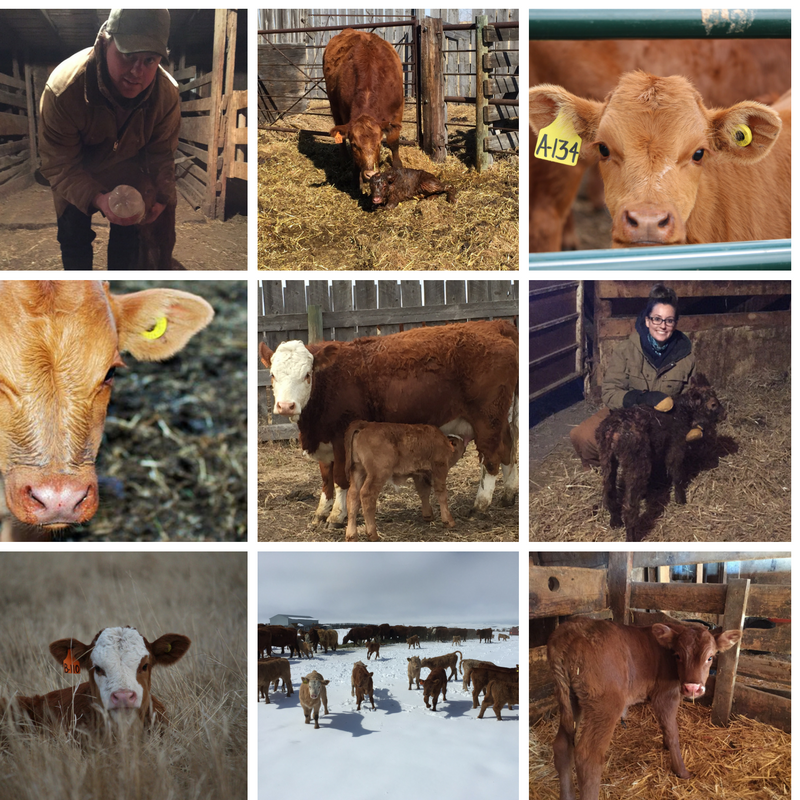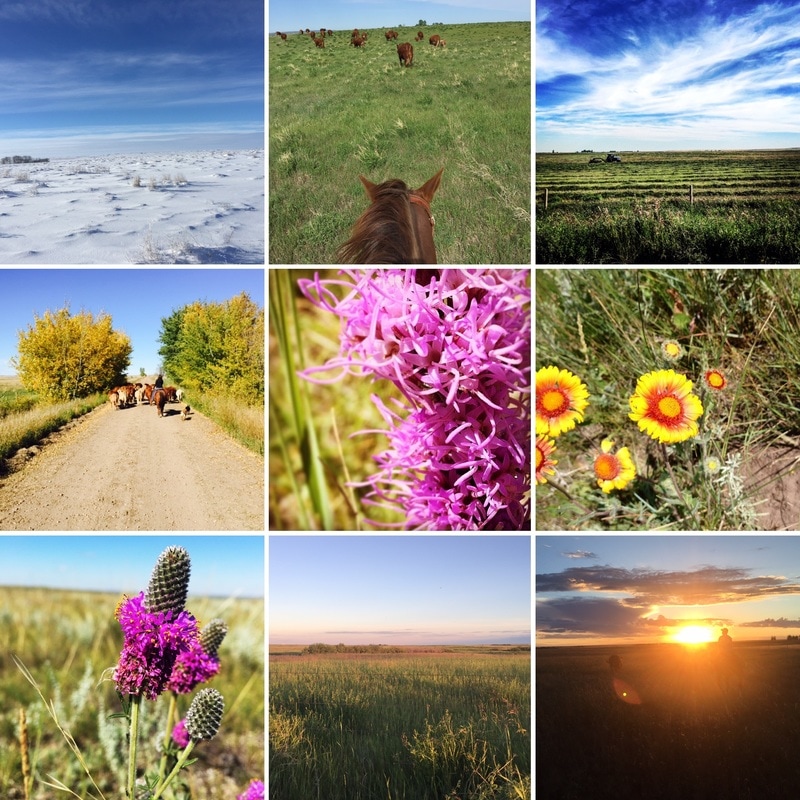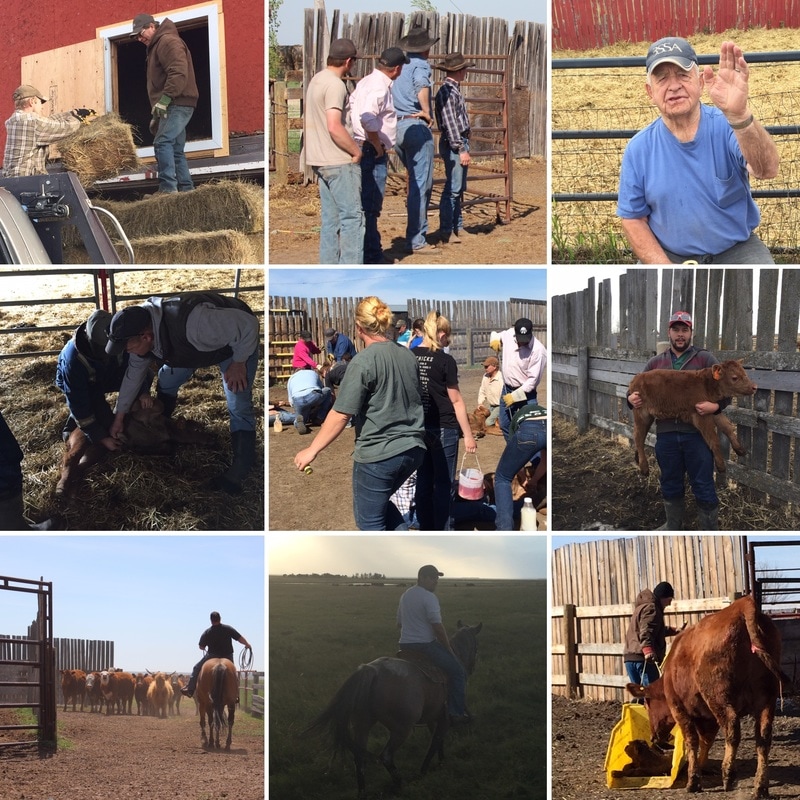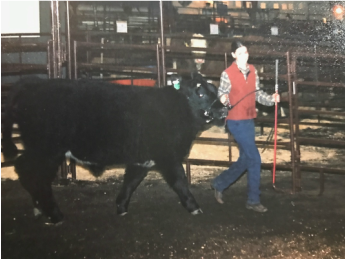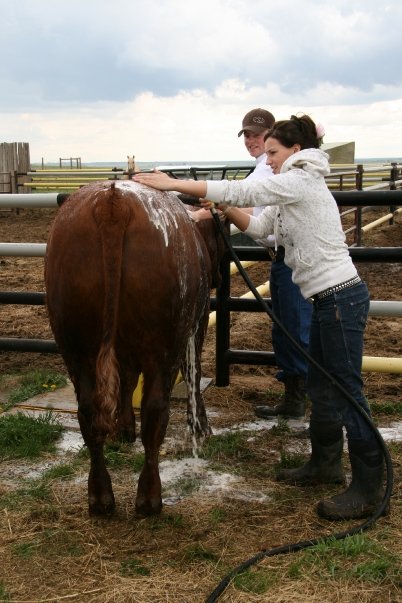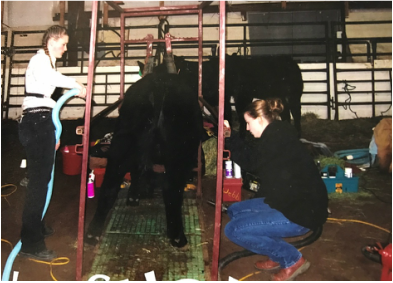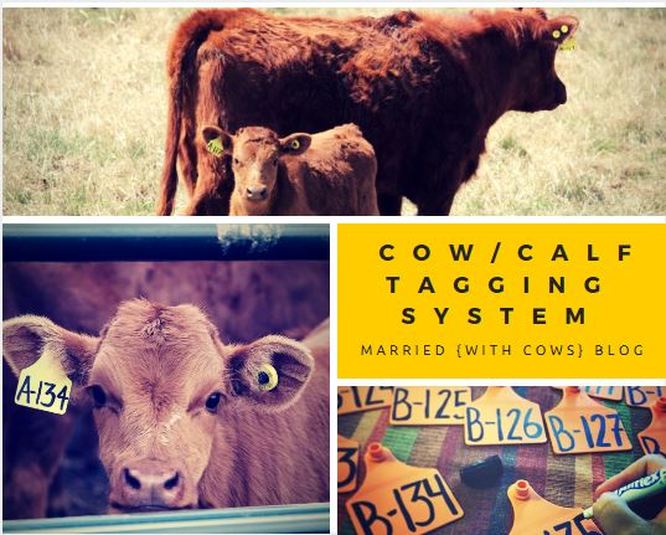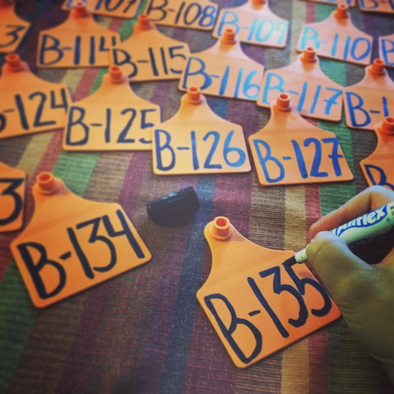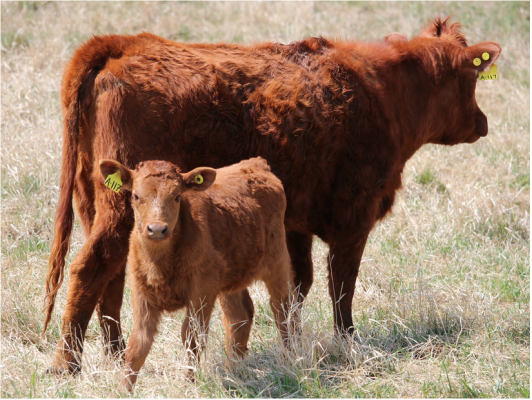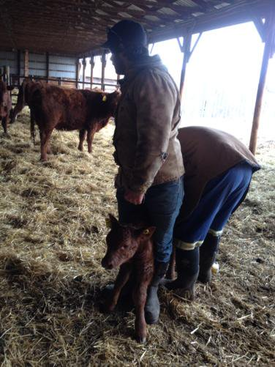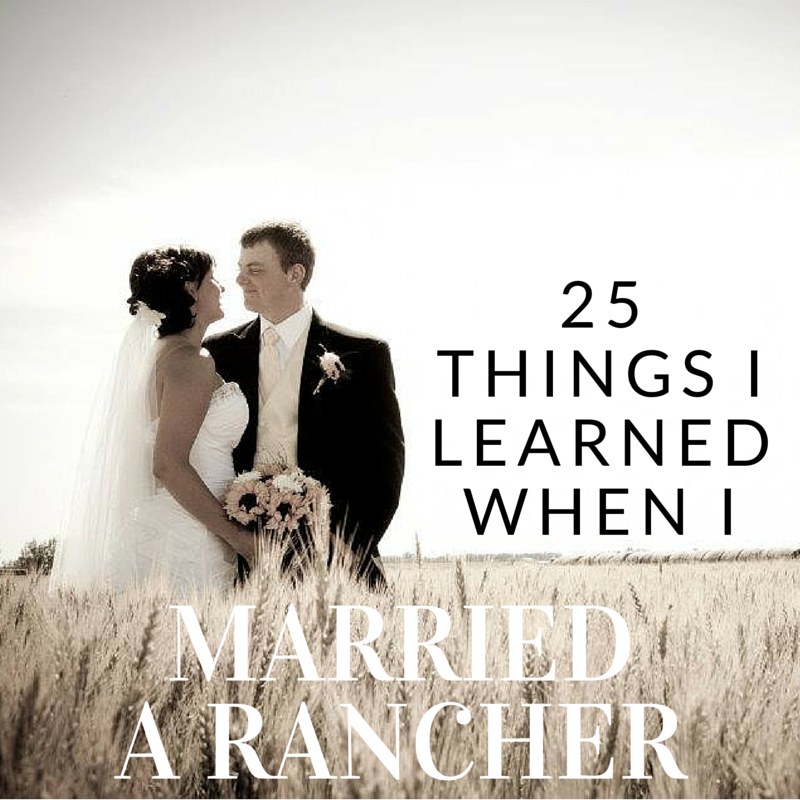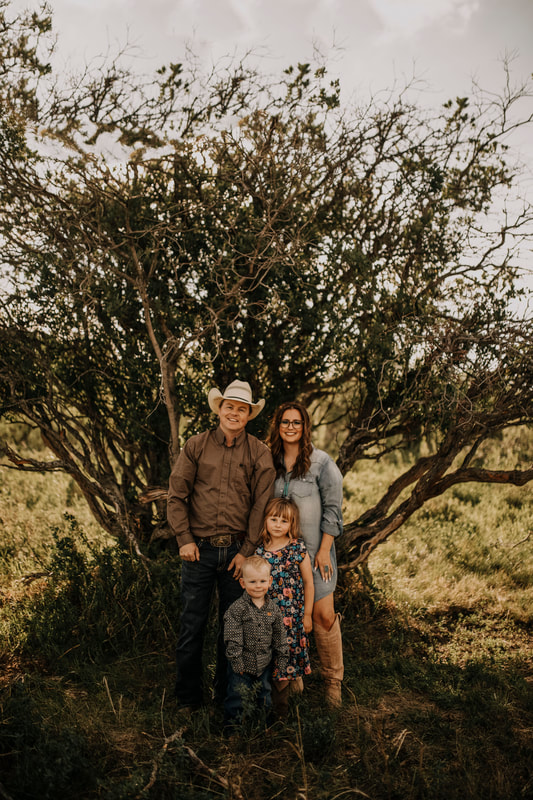|
If you're here for inspirational, beautifully garnished cuisine with fresh garden herbs, you're in the wrong place. If you're here to prep for calving and want a freezer full of EASY, yummy, good ol' fashion meals, then I got you. Read on... First you need to know that I am LAZY in the kitchen. I don't enjoy cooking. I do it because apparently it is a necessity for my family to eat. So before our busiest season of the year I like to stock up on ingredients, meals and easy-peasy-lemon-squeezy foods for us to grab on the go (or just eat numbly while we try to keep our eyes open after a long night of calving). Here's a few tips & tricks I use to get ready for calving season (or any busy season!): supperBIG BATCH everything & freeze. Period. In the weeks leading up to calving when I make something for supper, say lasagna, but I'll do a triple batch and freeze the extras in tinfoil containers. Put in the freezer and VOILA, when I'm running behind (or simply don't want to cook), I pull out a freezer meal and I'm a hero. I do this all year round and with baking too. The best part is that I usually have extras after calving still in the freezer- hello haying meals! And those leftovers from branding (or make extras on purpose)- hello harvest meals! Some of my favorite meals to big batch & freeze are below: Lasagna- I just wing my lasagna recipe (but I also love this zucchini lasagna recipe when I have tons of big zucchini from my garden!) Spaghetti Bake- Whenever you have leftover spaghetti (which is often in my house because I can't seem to measure spaghetti appropriately) I throw this together and pop in the freezer Crockpot Roast Beef- I'll do a rather large one and then use the leftovers for a few days. I can then make & freeze... Shepherd's Pie- Perfect for your roast beef (or hamburger) & mashed potato leftovers Roast Chicken- Not a real time saver, but if you plan ahead you can make a chicken and use your leftovers to make & freeze... Chicken Pot Pie- I sometimes make mini versions for easy individual field/work meals, but you can make large family size ones too. Clearly I wrote this recipe out pre-kids as today I would just buy pre-made pie shells, ha! Stuffed Potatoes- great to have in the freezer, individually wrapped and ready to pop out whenever you need a quick side. I loosely follow this recipe but mostly just wing it. Super Potatoes- these are what we make for branding and they're a huge hit! Again, another great side option to thaw and throw in the oven. Chili- My mom's chili recipe is the BOMB (and not spicy, because we're not spicy family). Check my insta story highlights for a rough recipe. When I cook chili I usually pair it with this cornbread. This also freezes great & is easy to throw on the side of a field meal later on! Casseroles- My hubs is not a fan, so I don't have any stellar recipes for you (sorry!) but I'm sure you hve your faves. LUNCHWhile anything above could be used for lunch (hello, leftovers), I have a few go-to lunch recipes that I don't prep ahead of time but always have the ingredients on hand for in my freezer. They're not glamorous but they are delicious. Also, they're great if you need to feed a crowd on short notice, or after helping you process cows. Garlic Bread Pizza: Think pre-made garlic bread from your grocery store, pasta sauce from a jar, your favorite pizza toppings (I buy pre-packaged pizza meat variety packs) & cheese. Bake in oven until warm. Done & delicious! Ham & Swiss Sliders (my absolute favorite- I could live on this recipe!)- I just always have a dozen tray buns, swiss cheese and a pack of pre-sliced sandwich ham in my freezer. Pigs in a Blanket. Yep, its definitely not glamorous but its darn easy & tasty. Have hot dogs and pilsbury dough on hand. It's that easy. Pair with some canned soup. Done. Calzones- Any time I have leftover meat (roast, taco meat, ground beef, chicken, anything!) I will throw it in some sauce & cheese and stuff it in a calzone. Freeze. Thaw when needed & warm! BREAKFASTPancakes- My mom taught me this and its genius. Whenever you make pancakes, make a ton. Then freeze the extras in a ziploc with parchment paper between. Take out one at a time and throw in the toaster for instant pancakes in the morning! Baking Powder Biscuits- you'll see this one in dessert too, and you'll know why once you try them. But my hubs loves them with just butter or homemade jam/jelly as breakfast. Or throw some fruit in the recipe for a scone-like breakfast treat. You can find the recipe in my insta highlights. Smoothies- I like the taste, but hate the hassle/clean up. But of course my daughter loves them, so I'll make a big batch of fruit smoothie (literally just throwing in whatever I have on hand) and then freeze extra in ice cube trays. Then when she wants a smoothie I'll take a few out, add either milk or yogurt and bammo, done! Muffins- I always have tons of veggies/fruit in the freezer from my garden so I attempted to use up some in these healthy-ish recipes. I did a couple dozen of each and then froze them in variety packs of 12. My intention is to thaw a pack, use them for breakfast & snacks as easy to grab options: Banana Rhubarb Muffins Pumpkin Banana Muffins Apple Rhubarb Muffins Double Chocolate Zucchini Muffins Banana Chocolate Chip Muffins DESSERTBaking Powder Biscuits- Now this is the way my side of the family likes to enjoy these biscuits- as dessert. Add whipped cream & strawberries. Easily one of my fave desserts of all time. I make big batches and freeze in ziplocs. Again, find the recipe in my insta highlights. Bread Machine Sticky Buns- Now my mom has the BEST cinnamon sticky buns, but they take her ALL day to make. I have no time for that. Hello bread machine- no kneading here! While this recipe does take some time (for rising) and dirty dishes, you can make big batches easy and freeze. YUMMM. Apple & Pumpkin Pies- These are my go-to recipes for dessert. I grow lots of pumpkins in the summer and collect my mom's apples so these ingredients are always on hand in my freezer for me. I've also made individual pies in little tart shells for brandings or field meals. Super handy. SNACKSIs there anything better than baked goods? Nope. I am a sweets girl alllll the way. So I like to bake some snacks for the freezer I can just pull out and thaw. Banana Bars- If you're like me, I have a TON of old bananas in the fridge, so you'll see a common theme below ;). A new recipe I had to try this year was Rocking Bar H Ranch's Banana Bar. I was insta-influenced on this one and it was so worth it! Also if you don't follow Brooke (@rockingbarhranch) on Instagram, you should! Cookies My favorite year-round cookie hack is to make our favorite cookie doughs, scoop them out on a cookie sheet, then freeze them. Once frozen I take them off the cookie sheet, throw them in a ziploc and put them back in the freezer. This makes it sooooo easy any time you want cookies. Just grab as many as you like, thaw (or if you don 't have time, I add about 2 mins to my regular cook time) and bake! This is my go-to hack for when neighbours show up and I need something yummy to share! This year I made Chocolate Chip Cookies & Double Chocolate Cookies and froze the dough. Pumpkin Cake Cookies- These are a long time fave of mine and a perfect way to use up more of my frozen pumpking puree. I haven't froze the cookie dough before, but I do freeze the whole cookie, icing and all. Monster Cookie Oatmeal Energy Bites- My sister-in-law introduced me to these. AMAZING and way too easy. Literally just combine 3 cups oats, 1 cup peanut butter, 1/2 cup honey and 1/2 cup M&M's or chocolate chips. Shape into balls, refrigerate for an hour. Done!
Yes the necessities of calving usually include chains, tags and bagged colostrum. But that's not what this post is about. This calving prep post is all about the goodies that you don't need, but as a rancHER these will make the stressful (in my case, chilly) time of year just that little bit better!
Lamb's Soapworks Lip Butter. Because winter. You can check out their website or if you're local I got mine as a Christmas gift from Vintage Nineteen89 in Brooks! I have Vanilla Bean and it is HEAVEN.
Running M Brand headbands (fleece or regular, depending on your calving weather) & scrunchies for that wild hair. If that doesn't tame things, just go ahead and get...
Rustic Rose's Farm Hair Don't Care sweater
The Bunkhouse silk scarves. Nicole always has the best scarves, but if you are a little more artistic than I am, you'll need to snatch up one of her Color Me scarves. That's right, you can make your own design! There are also the coolest kids scarves in the Color Me collection to keep your kids busy (maybe while you've ran out to the barn to check on a mama!).
Sweatpants. While you're at The Bunkhouse, you'll definitely need to grab "the cows don't care" sweatpants because who actually wears pants under their carhartts?
Some friends of mine had GREAT suggestions for keeping those legs warm, too. One suggested Lulu Lemon lined studio pants & the other suggested good ol' classic wind pants over your yoga pants. She made a great point... its much easier to run from a cow in yoga pants than carhartts! ;) Plus I love the wind pants idea because you could put them over anything and still have clean pants underneath.
Ciara Sandum Photography Go-Mugs because you'll need alllllll the coffee for those long days (and nights). Mental Note: Restock the Baileys ASAP! And of course I'm going to encourage you all to get the mug with our Whiskey Creek Ranch heifers on it ;) but Ciara has lots of cute go-mugs to choose from!
I don't know about you all but calving time for us usually coincides with little sleep. Whether its waking up to check calves or an overactive brain once we do lay down, I've recently found a few things that help us get back to sleep fast.
Here's a link to our favorite Weighted Blanket Life. Changer.
Essential oils in the diffuser. My favorites are eucalyptus or peppermint as they make me feel like I'm at the spa :). Lavender, chamomile, bergamot and ylang-ylang are also supposed to be great for sleep, but I'm new to this oil thing and stick with the ones I know, ha!
The best way to ensure you fall asleep after a cow check... don't get out of bed! We use our ipad (bigger screen than our phones) to check the camera- that way you don't even get cold 99% of the time. A blog post on our calving camera systems coming soon, since I consider them 100% necessary to our operation!
And finally, here is a list of random unnecessary necessities I like to stock up on in the house before calving as you never know when you're going to get to town...
1. Bailey's (no joke, it had to be in here twice) 2. COFFEE. All the coffee. 3. Vitamins C & D and Cold FX (also recommended by friends on Insta- a must have!) 4. Yeast & bread flour... If you don't have one, invest in a bread maker. There is nothing yummier (and more satisfying) that pushing a button and having a warm loaf of bread or buns when you come in from a cold calving check. Trust me, you'll look like a hero! 5. Meal Prep. Yes I don't leave the farm during calving. I'm here all day nearly every day for weeks on end... but that doesn't mean I want to be cooking ;). So I try to make things a little easier on myself by prepping some meals and a lot of snacks that I can pull out of the freezer and warm with minimal effort. More on that to come! 6. Kids activities. This is a new one for me. My three year old is BUSY. And when I need to rip out to the barn for a few minutes or do a check where I don't want to burn 15 minutes dressing/undressing a toddler, its best to have her busy. Hello DOLLAR STORE! Anything crafty, and I'm there. (Minus paint, because we all know how that turns out unsupervised). 7. Batteries for those flashlights/headlamps. Check and see what sizes you need and stock up. Also for those kids toys ;)
What are your must-have luxuries for calving season? Comment below!
In case you remember from the 2016 blog called Our Cow/Calf Tagging System, I am a bit particular when it comes to keeping track of cows and writing down records. At the time, we had quite an extensive record keeping system we developed through Excel. As much as we love a good spreadsheet, we were wanting a bit easier system (where I didn't have to write the code) to keep our cow/calf records up to date. Enter, HerdTrax.
HerdTrax is a herd management software developed by Dr. Troy Drake, which allows you access to carcass data. Once you enroll in HerdTrax, you can choose to retain ownership of your cattle until harvest, through Dr. Drake's extensive list of feedlots. Once harvested by Cargill, you are able to see the carcass data from your actual calves, link it back to their dams and sires, and make management decisions that benefit both you and the feeder. The idea is that you can cull the cows that don't make you money, and invest in the cows that do. Now. I'm not here to tell you what to do, or even that this is the best software out there. However, I am here to share with our readers what has worked for us. On the data entry side of things, HerdTrax is fairly simple to use. While not in an actual App form, you can use HerdTrax on your phone, ipad or computer, to enter data as you complete work on the ranch. We enter individual treatments, calving records, breedings and pasture movements on the go. Because I am somewhat of a worry wart, I do still write down herd treatments, group vaccinations, etc on paper, entering them into HerdTrax later. I know, I know, I shouldn't be doing that in this day and age, but I am secretly an 80 year old Grandma who doesn't trust my entry skills, or that my phone won't crash and somehow lose all my data (I don't think that can even happen). Being an excel gal, I do notice the odd weird glitch or inconvenience in the HerdTrax software, but honestly, whenever I do, I email Dr. Drake and he fixes it. It's an easy to use program, has all the data fields I was looking for, and can even allow you to upload up to 6 photos for each animal (hallelujah!). Overall, I haven't found any other software programs I prefer. On the data sharing side of things, this software is pretty legit. When we retain ownership of our calves, the data is shared directly with the feedlot and I can see how all my calves are performing right until harvest. I also love the fact that I get carcass data back, allowing us to make management decisions that actually impact our product. Thinking back, it was actually crazy that we were selling a food product, but had no idea how that product yielded, tasted, looked or sold to consumers. WHAT?! In any other industry that would be insane. Only lately, through programs like HerdTrax or the CRSB pilot, is data being shared all the way from producer to harvester. And since all your data is at a click of a button, even if you're not retaining ownership through HerdTrax, you can email that data to anyone that wants it (perhaps a new marketing tool?). All i can say is it was time, beef industry, it was time! I couldn't believe the cows that were making me (and the feeder) the most money. Let me tell you, it wasn't always my favorite cow with perfect composition and seemingly high weaning weights. Sometimes it was, but not always. Sometimes its that ugly cow in the corner that surprises you. We need to, as cow/calf producers, start looking under the hide to improve our profit margins. But, I'll get off my high horse now. Have a read, maybe visit the HerdTrax site, and maybe give it a try. It might not be for you. But i would be going against the reason I started this blog if I didn't share with you guys something I found that works and adds value to our operation. Until next time, Jess In July we are expecting our first daughter and we couldn't be more excited! Enjoy a few of our maternity photos done by the extremely talented Ciara Sandum Photography (check out her page, its seriously amazing!).
I guess maybe we will have to change the name of the blog soon...
Social media and blogging have been the cause of a lot of flack from people in my life. Many of the people I interact with "in real life" think it's silly that I share so much of my life on the internet and often like to give me a hard time about it. I must admit that sometimes I take that ribbing to heart, but then I remember about all the amazing opportunities my social media life has granted me. One of which is meeting fellow online agriculture advocates form across Canada. At the inaugural Canadian Beef Industry Conference this last summer (read about that here) I met up with some of my blogging role models, one of which was former Cattlemen's Young Leader mentee and Ontario Fruit & Vegetable Growers Association communications Specialist Amanda Broadhagen (@AmandaBrodhagen). She recently tagged me on Facebook to participate in the #BeforeThePlate Challenge, and I of course accepted!
Favorite Moments
Amanda challenged me to share some of my favorite moments on the farm where we proudly produce food for Canadian (and international) consumers to enjoy. As commercial beef producers, Clay and I put our heart and soul into supplying healthy, safe, delicious beef products that are raised responsibly and humanely. We love to share the ins and outs of our operation through online platforms, and we welcome questions both in person and on social media. We always vow to answer honestly, and hope that we postively represent Canadian cattlemen.
Calving Season
Calving season is one of my favorite times of year on the ranch. We typically calve in March but there is no right or wrong time to calve your cows, in fact, dairies calve all year round! Each operation will choose the time of year that best suits their herd and needs. While calving may be one of the most stressul, time consuming and hectic times of year at our ranch, it is also the most exciting, rewarding and fulfilling. You just can't help but smile when you are surrounded with newborn baby calves, happy mamma cows and the first signs of spring! Here are some photos showcasing calving season at our place:
Land Management
It may come as a surprise to some, but land management is also a cattlemen's task that I find so much joy in. We are very fortunate to be able to raise cattle partially on native prairie rangeland. It never ceases to amaze me how truly diverse, adaptable and valuable this natural resource is. And because of that, Clay and I take great pride in balancing the forage needs of our cattle with the unique capacities of the range. We strive to leave this land more abundant, diverse and efficient for our future children than we received it. Here are a few snapshots of the range, tame pastures and hay land that we utilize in our beef operation:
Cow Community
I would be totally amiss if I didn't mention the sense of community in raising beef cattle. Rural life has a way of bringing people together, and those people; well, they are down right amazing! Whether its helping care for calves, feeding cows, baling hay, harvesting, processing cattle or moving pastures, my community has been right beside me every step of the way. Clay and I are so blessed to have such phenomenal friends, neighbours and family that are here to help us at the drop of a hat. And speaking with other cattle producers, this is a common thread no matter where in the world you produce your beef. In honour of the thoughtful, generous, hardworking cattle communities out there, here are some photos of our help. And to all you helpers reading this, THANK YOU! I can never say it enough.
It's SHOW TIME!... at Northlands Farmfair International As Edmonton's Farmfair International quickly approaches (November 9-13!) and I prepare for my very first visit to Northlands for this event, I feel the need to share my excitement! I am honored to volunteer my time at the Beef Advocacy Canada booth during one of Alberta's top agricultural shows as part of the Cattlemen's Young Leaders program and am so looking forward to the week ahead! 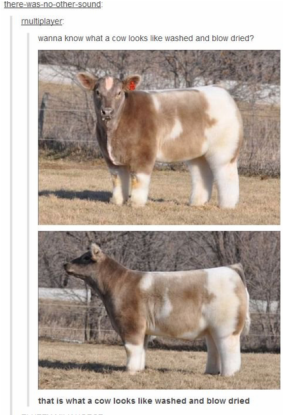 If you are interested in my adventures over the next week follow me on Twitter (@WhiskeyCreek_AB) or check out the hashtags #Farmfair and #CFR43, or the accounts @Northlands, @CFRedmonton for all the Farmfair International fun! While I have never been to Farmfair before, I have spent a few days in a cattle show ring in my day and all of the hype of this event has made me reminisce about my show days. I scrounged up a few old photos below from when I showed cattle in 4-H as a youngin', so have a look and enjoy a good laugh on me! While I giggled with my husband about my fashion choices, my mind wandered to the popular clubby calf photo that has been going around the internet discussing blow drying cows. While it is true (cattle showers do wash their animals, and dry them!) I thought it might be fun to discuss how and why cattle exhibitors get their animals ready for showing, and maybe how you might get ready for Farmfair too! Why Show Cattle? Why do some cattle owners spend the time to wash and blow dry their animals, drive them to the city and enter them into huge livestock shows like Farmfair International? The answer is simple- to show off! Cattle breeders, whether commercial or purebred, use these opportunities to demonstrate the quality and characteristics of their animals, not to mention all the hard work and pride that goes into breeding cattle. Depending on the breed, you may see a dairy producer show off the superior milk production of their cows, or maybe an Angus breeder demonstrate the carcass quality of their beef, or maybe even a commercial breeder show off the hybrid vigor of their crossbreds for replacement heifers. That's the beauty of livestock shows- there is something for everyone! Whether you are a fellow cattle breeder, beef consumer or someone just interested in farm life, there is no better place to learn the ins and outs of livestock. These shows give livestock producers the opportunity to see a tiny piece of many farms in a one stop shop. While I joke about showing off and bragging about your own cattle, shows like Farmfair International do allow producers to share ideas, learn from each other and discuss production methods that would otherwise never be possible. The 'international' part of Farmfair International truly is just that. People from around the world are invited to and attend Farmfair! How Do You Blow Dry A Cow?
After gaining the trust of your show animal, the next step is getting show ready! I would start by clipping. I used very quiet electronic clippers to do the job. My hubs is still jealous that I used nicer clippers on my cows than on him! The point of clipping is to highlight the best features of your show animal. You can clip to varying degrees, but I typically concentrated on head, top line and tail head clipping. It's important to note that clipping does not equal shaving- just minimal trimming that emphasizes the best qualities, while still looking natural. (Disclaimer: I had some amazing friends and family that always helped me clip my 4-H steers! They did a top notch job and I am still very appreciative of all the hours of hard work they put in!).
Get Show Ready! So now that you have a crash course as to what goes into getting cattle ready for big shows like Farmfair International, you need get ready yourself! And if you are anything like me when I showed cattle, you'll spend weeks getting your cows ready, wake up early in the morning to get the best wash rack spot and the closest grooming chute, work on perfecting that tail head for hours, and then throw on a semi-clean shirt with a bunch of wrinkles and pinch your cheeks for color! Cattle exhibitors often spend all their time and effort pampering their livestock and run out of time for themselves. So don't be like I was (you can do better!). Head on over to the Ram Country Marketplace and grab yourself some fashionable outfits from the many amazing vendors that will be setting up shop. (You can get the full list here.) And even better, grab a thing or two for your friends and family. By the look of the vendor list there is no better place to get your Christmas shopping done! Disclaimer: This post was sponsored by Northlands. Opinions expressed are my own. Compensation was received.
Posted By: Jesse Williams
I have had a lot of questions about how we structure our cow/calf management tags in our herd, as I have posted a few pictures of making tags and our DIY Tag Board, that seemed to confuse people. This leads me to believe we must be doing things rather different than anyone else (which could be a good or a bad thing) and so I thought I would take a few minutes to share what we do and why. I would LOVE to hear how you do management tags on your operation because there is always room for improvement!
The International Standard
We do follow the international tag lettering system for our COWS. This handy dandy little system gives your cows a letter for their tag that corresponds with the year they were born. This is super convenient when buying cows at the auction mart- IF (and I stress, IF) the previous owner follows that same international standard. I am learning more every day that there are less and less people following it, which I always ask myself 'Why not?'. If you have any insight into that, please let me know!
Cow Tags
As mentioned above, we give all cows their letter corresponding to their year of birth, followed by a management number. We simply started at 100 when we began our herd. This is because we have very similar cows to our family members, who we also sometimes run in the same pastures or management groups. By starting all our numbers in the 100's, (their's start in the single digits), we can easily identify whose cow is whose.
We also use a different colored tag for every year of birth. This is simply another aid to allow us to identify a cow at a quick glance. Sometimes you may only be able to see the number on the tag because of long hair, but if its orange you know that is likely a 'B' cow, for example. It is probably over kill (and does make for a LOT of extra tags always hanging around in every color) but it does work well for us.
Reusing Tags & Saving Money
In order to save a bit of money we reuse the same calf tags every single year. At weaning we cut the button off the back of each tag, saving the tag for the next calf crop. We do this when the calves are in the chute ready to load onto the liner to the auction mart. We simply lean over the chute with a tag cutter and remove the tags. Now this is easier said than done and I'll be the first to admit it. In previous years we had an old rickety chute that had bars across the top. Those bars were just in the right spot to bonk your head when you weren't paying attention. We do have a better chute now, but it is still somewhat inconvenient and been a topic of discussion in our house for some time. I guess the cheap side of us won over because we are still doing it!
After weaning, we take the tags in the house, wash them in soapy water to remove any old dirt and use a knife or pen to pop out what's left of the old button. We then use a tag pen to trace over the existing letter and number to make sure it is vibrant and readable for the next year.
Economics on reusing tags:
*These are the actual costs of tags and buttons we purchased in 2015. Tax not included. Large Allflex 2 piece tags/buttons: $30.44/ 25 tags & buttons ($1.22/head) Allflex buttons: $14.59/ 25 buttons ($0.58/head) Savings: $15.85/ 25 head ($0.63/head) For a herd that produces 100 head of calves continuously, you would be saving $63.40 per year (or $0.63/head). Now that doesn't sound much, and it really isn't, but 63 bucks is 63 bucks in my opinion. My father in law loves to say that when you are young, you trade work to save money, and when you are old you trade money to save work. Clay and I are still young so I think we will continue to take the extra few minutes to remove tags, wash them and reuse them each year, at least for now. Note: We have a very low tag loss rate in calves. In 100 head, we might lose one per year, if that. Pros/Cons of Our Tagging System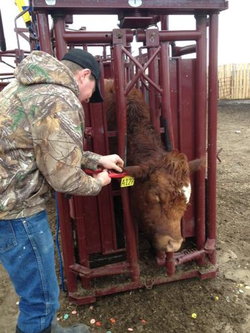 This yearling got it's old tag removed when she became a permanent part of our herd. The A corresponds to her year of birth in 2013. This yearling got it's old tag removed when she became a permanent part of our herd. The A corresponds to her year of birth in 2013.
While this is the way the hubs' family has been doing it for years, my number one concern when I was introduced to it was the increase in time/work to tag replacements twice, plus the stress of two tagging steps for replacements, or the removal of the tags for calves going to market. They have to be tagged at some point in their life, but the second tagging for replacements is usually done in the chute when the heifers are receiving annual vaccinations. And because we use the same hole that their original tag was in, I think the stress is fairly limited.
For the calves being sold to market, I think it would be fair to say there is some stress on weaning day and adding an additional few minutes in the chute trying to wrangle a tag out of their ear likely adds to it. However, I don't know how much stress or how much shrink that would equate to, and if it would be enough to cancel out the savings from reusing tags. The other option I see a lot of producers use is to tag at branding rather than at birth. I am not particularly fond of this method just because it is hard enough to know which calf goes with which mother when they have corresponding tags. Without tags for a few months before branding would always make me worry I have the wrong calve/cows matched up. This would wreak havoc on my record keeping system as my data would no longer be reliable. If a cow lost her calf and adopted another (which most certainly happens), and I use the adopted calf's data as that cow's progeny, I could have very skewed results as to the genetic characteristics that mother throws.
At the end of the day, this is how we've been using management tags in our herd. It may or may not work for you herd but we sure would love to hear how your system might differ. Leave a comment or send us an email!
|
A Blog About Our Life, Love & Lessons Learned on the Ranch
Categories
All
in the mediaArchives
February 2024
|
